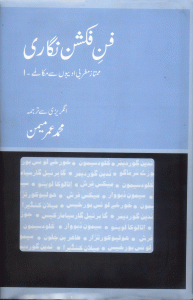Book Review: Translation from the Paris Review
By Zeenat Hisam | Books | Published 8 years ago
 Creative work — be it in the realm of literature, music, painting or sculpture — has always fascinated the human mind. What does it entail to create an artwork? Which qualities is a creative person endowed with and which ones are acquired? Does the process of creation involve imagination, observation, life-experiences, feelings and emotions, intellect, skills, passion, commitment to some idea, thought? Is it all of these, or a certain combination of these elements? And, of course, who can throw better light on this question than the person who has created the artwork.
Creative work — be it in the realm of literature, music, painting or sculpture — has always fascinated the human mind. What does it entail to create an artwork? Which qualities is a creative person endowed with and which ones are acquired? Does the process of creation involve imagination, observation, life-experiences, feelings and emotions, intellect, skills, passion, commitment to some idea, thought? Is it all of these, or a certain combination of these elements? And, of course, who can throw better light on this question than the person who has created the artwork.
Thus, began in modern literature “one of the single most persistent acts of cultural conservation in the history of the world,” writes a critic, of The Paris Review’s ‘Writers at Work’ interview series. The Paris Review was launched in 1953, rebelling against literary magazines that gave dominant space to critics, to enlighten readers on literary works and the process of their creation. The Paris Review put authors centre stage and presented in-depth self-portraits of the world’s literary geniuses over seven decades, Nobel laureates and accomplished writers and poets who reflected on their life and art, touching upon both the mundane and sublime in their conversations about the creative process.
A selection of these remarkable interviews, translated into Urdu by Muhammad Umar Memon, is available for the first time to the larger Urdu audience, students, young writers, would-be writers and fiction aficionados. The selection, Fun-e-Fiction Nigari, comprising 32 interviews in three volumes, is a valuable addition to the rich and extended body of translated work Mohammad Umar Memon — a renowned scholar, writer, translator — has to his credit so far.
 In the foreword to the first volume, Memon explains why he took to translating these interviews. He shares his enchantment with Mario Vargas Llosa’s exposition, The Perpetual Orgy: Flaubert and Madame Bovary. To him, unlike a critique, the book allows you to swim along with Llosa’s own inner experiences, to understand the creative processes that transformed Flaubert’s idea of Madame Bovary into a novel. Another book that led Memon onto this quest was Llosa’ Letter to a Young Novelist, a book that lays bare the inner workings of fiction. Memon then set down to explore The Paris Review’s interviews and later thought of sharing the fruit of his labour of love with Urdu readers.
In the foreword to the first volume, Memon explains why he took to translating these interviews. He shares his enchantment with Mario Vargas Llosa’s exposition, The Perpetual Orgy: Flaubert and Madame Bovary. To him, unlike a critique, the book allows you to swim along with Llosa’s own inner experiences, to understand the creative processes that transformed Flaubert’s idea of Madame Bovary into a novel. Another book that led Memon onto this quest was Llosa’ Letter to a Young Novelist, a book that lays bare the inner workings of fiction. Memon then set down to explore The Paris Review’s interviews and later thought of sharing the fruit of his labour of love with Urdu readers.
Muhammad Umar Memon has no patience with traditional tools of criticism when it comes to fiction. Like many lovers of fiction, he is averse to the critics’ rigid evaluation of a literary work, questioning of purpose, unravelling of techniques, decoding of structure and stripping of layers in search of criteria set by the critics themselves. Memon does not believe in ascribing moral, social, or political purposes to fiction. In the foreword to the first volume, he quotes Cabrera Infante who said: “To me…writing… should be an end in itself — literature. Any literary work that aspires to the condition of art must forget politics, religion, and, ultimately, morals. Otherwise it will be a pamphlet, a sermon, or a morality play.”
Many writers have talked in a similar vein, though their fiction reflects strong political content: they write for pleasure and not for some larger noble motive, least of all to change the world. Memon refers to Jose Saramago who says, “I am a mere novelist, I just write about the world as I see it. It is not my job to transform it. I cannot transform it all by myself, and I wouldn’t even know how to. I limit myself to saying what I believe the world to be.”
Of the 32 interviews Muhammad Umar Memon has put together in three volumes, 29 were published in The Review and three are taken from other sources. The third volume includes interviews of Israeli writers Shimon Ballas (first appearing in the web magazine Words Without Borders) and Samir Naqqash (published in Keys to the Garden: Israeli Writing). Readers would be delighted to find that the collection includes a detailed interview of Intizar Husain, taken by Memon himself, originally published in Shab Khoon, a literary Urdu magazine from India.
Since the 1950s to date, The Paris Review has published 386 interviews of writers and poets including William Faulkner, Ernest Hemingway, Jorge Luis Borges, Gabriel Garcia Marquez, W. H. Auden, Pablo Neruda, Simone de Beauvoir, Nadine Gordimer, Naguib Mahfouz, Chinua Achebe, Doris Lessing and Elena Ferrante. Muhammad Umar Memon has made a selection of the interviews he preferred, as he tells us in the foreword.
Gabriel Garcia Marquez remarks in an interview, “A good translation is always a re-creation in another language…” Memon tells of the difficulties a translator confronts, at times, in rendering a particular phrase, witticism or an idea in Urdu, or of the sentence that is flawless in English but would sound complex if put into Urdu as it is. He confesses with humility that he found Cabrera Infante’s interview to be very difficult and that he “can’t vow to the validity of his own translation.” In addition to being modest, Memon is a hard taskmaster: he often selects difficult Urdu words which are seldom used. And he expects the reader to do the hard work: look up the dictionary, broaden her vocabulary and polish her Urdu — a task left unfinished by society and by the linguists.
Aside from Memon’s penchant for tough words left to be cracked by the reader, the interviews rendered in Urdu read like real conversation, springing up from a dynamic interaction between the interviewer and the writer, in a stream of consciousness style, with punctuation peculiar to spoken language. And that is, to me, an indicator of good rendering. Also, you get a feel of mutual enrichment of the two languages, as Larissa Volokhonsky, a major translator of Russian classics, said, “The good effect of translating is … cross-pollination of languages.”
Hoori Noorani of Maktaba-e-Daniyal has done a service to Urdu by publishing the three volumes.


